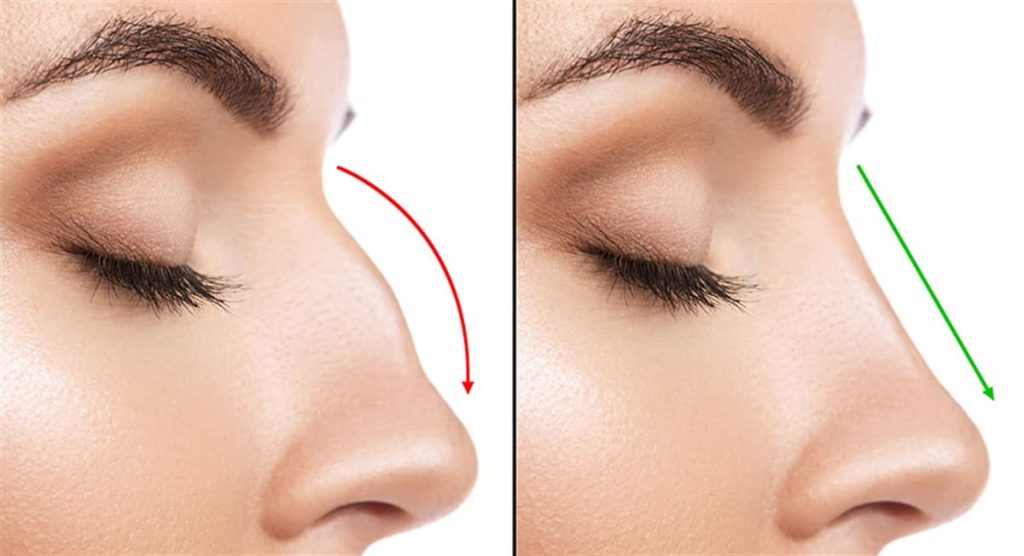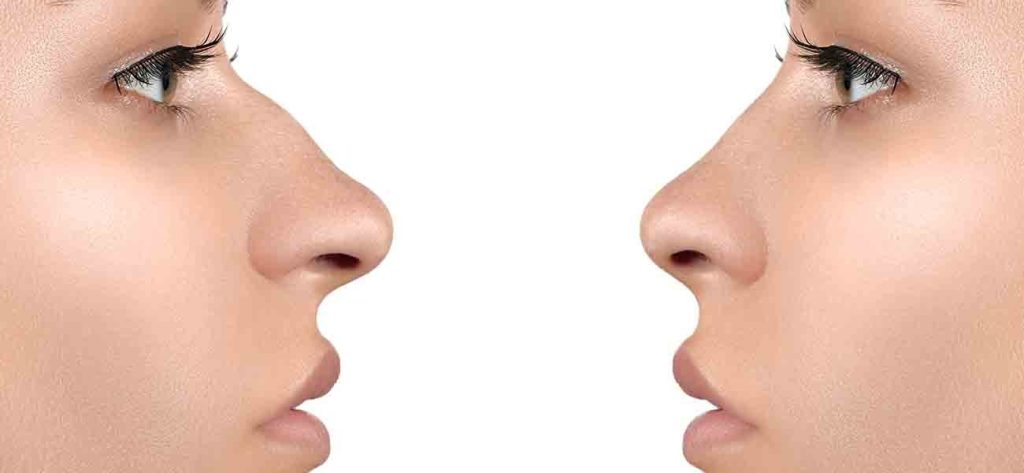Primary Rhinoplasty
Some patients may not be satisfied after rhinoplasty. New problems may develop after the surgery or the patient’s expectation may not be met. In such cases, the problems that have occurred in the nose are tried to be eliminated with a new surgery and corrections that can be made in line with the patient’s wishes are made.

In short, revision rhinoplasty is the correction of the nose in terms of aesthetics and function by re-operating the patients who have undergone at least one operation for aesthetic or functional purposes. In patients whose problems do not go away or who think that their problems continue despite having rhinoplasty, at least 6 months or 1 year should be waited for revision surgery.
The recovery process in revision surgeries may take a little longer than the first operation. Since the tissues are more adherent due to the first surgery, the surgical application will be more difficult.
Revision surgery differs from primary surgery. During rhinoplasty, we need some tissues, primarily cartilage tissue.
In the first operations, this cartilage reserve is present in the middle part of the nose called the “septum”. However, in revision surgeries, since this cartilage tissue needed is used in the previous surgery, it can sometimes be insufficient. For this reason, we can obtain our cartilage need from cartilage tissues in different parts of the body.
In particular, cartilage taken from ear cartilage or ribs are the most reliable and useful materials. If we need a small cartilage, it is possible to obtain cartilage with a small incision made behind the ear without creating deformity. In larger deformities, however, since this cartilage taken from the ear will not be sufficient, cartilage should be taken from the rib at the level of the breast line as an alternative.
Rhinoplasty Surgery Processes
Before Surgery
Detailed medical information about the person is obtained. The person’s thoughts about his nose and his expectations from the surgery are learned. What can be done to the nose of the person and what kind of image will be obtained are discussed together. External and internal examinations of the nose are performed. The internal structure of the nose is examined with the help of tomography in the required patients. Appropriate photographing and internal dimensional examinations are made.
Surgery Methods
There are two types of methods, Open Rhinoplasty and Closed Rhinoplasty. In addition, with a method we call ‘Protective Rhinoplasty’, the nose belt can be lowered without touching the back of the nose. This technique can be done on or off. In open rhinoplasty, an incision and intranasal incisions are made from the midline structure (columella) extending from the tip of the nose to the upper lip between the two holes. In closed surgeries, only incisions are made inside the nostrils. The method to be applied according to the nose structure of the person is determined by the doctor.
Operation
It is done under general anaesthesia. The operation takes about 2-3 hours. According to the chosen method, septoplasty and rhinoplasty are performed for breathing problems. The cartilage and bone structure of the nose is reshaped. If we need cartilage, midline cartilage called septum is often used. If there is not enough cartilage source, the person’s own ear or rib cartilages can be used. At the end of the operation, a special splint is applied on the nose. At the end of the surgery, non-adhesive silicone pads are placed inside the nose.
Postoperative
Cold application is applied on the nose and face for the first 24 hours. After feeding, the patient is carried out. They are discharged on the same day or the next day. If buffer is applied, 2-3. The splint on the nose is removed on the 7th day or according to the needs of the person, and your nasal tip sutures are removed. After the splint is removed, banding is applied in the skin color that will remain for up to 1 week. In the first days, there may be difficulty in breathing. Swelling and bruises may occur on the face and nose. Light activities can be started after 3 weeks, and heavy activities can be started after 4-6 weeks. Glasses can be used after 8-12 weeks.
Postoperative Nose Care
You should use the medications your doctor recommends regularly. Ocean water is recommended for nasal cleansing. In addition, the accumulated blood clots in the nose should be cleaned with the help of creams to be used with ear sticks.
Conclusion
The shape of the nose starts to become clear after about 1 month. At the end of 3 months, approximately 70% of the swelling will be gone. The remaining swelling takes months to go down. It takes about 1 year for the edema to completely disappear and the recovery to be completed.


